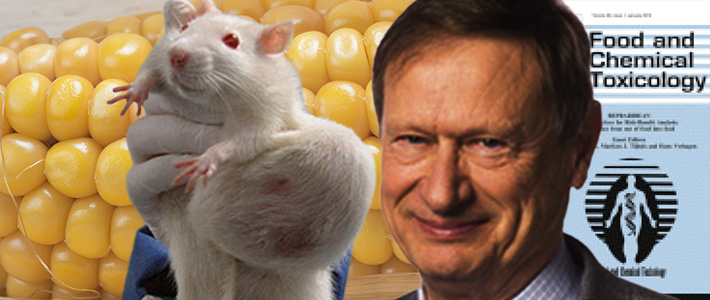In defending his retraction of the Seralini paper, the journal's editor makes a series of highly damaging admissions.
The Editor-in-Chief of Food and Chemical Toxicology, A. Wallace Hayes, has come under severe criticism after retracting from his journal the paper by Seralini et al on the long term toxicity of Roundup and a Roundup-tolerant GM maize. He has now published a defence of the retraction, which we reproduce below.
Here are some of the major problems with Hayes' defence of his retraction decision:
1. Hayes states that Dr Seralini's "claim (ie, conclusion) that Roundup Ready maize NK603 and/or the Roundup herbicide have a link to cancer is unreliable" because the data on this are "inconclusive". He goes on to say that "Dr. Séralini deserves the benefit of the doubt that this unreliable conclusion was reached in honest error. The review of the data made it clear that there was no misconduct. However, to be very clear, it is the entire paper, with the claim that there is a definitive link between GMO and cancer that is being retracted."
BUT there is no claim or conclusion in the paper "that Roundup Ready maize NK603 and/or the Roundup herbicide have a link to cancer"; nor does the "entire paper" "claim that there is a definitive link between GMO and cancer". IN FACT, THE ENTIRE SERALINI PAPER DOES NOT MENTION THE WORD "CANCER" ANYWHERE!
This was a long term toxicity study - the clue is in the title: "Long term toxicity of a Roundup herbicide and a Roundup-tolerant genetically modified maize". Seralini did not set out to look for carcinogenicity, or to conduct a carcinogenicity study. He has said he did not expect to find evidence of carcinogenicity, but he did find evidence of tumours in the treatment groups during the study, which he reported, as he should. Tumours unexpectedly found in a chronic toxicity study MUST be reported according to OECD452 chronic toxicity protocol ("lesions"), so Seralini had to note them in the paper. But he noted them without drawing definitive conclusions or extrapolating his findings to human carcinogenicity.
His toxicity study has now been retracted on the grounds of claiming "a definitive link between GMO and cancer", which it nowhere makes. So, did Hayes actually read the Seralini paper before retracting it? Because if he did, how come he doesn't know what the paper says?
Hayes not having read the paper is, of course, the charitable interpretation of his actions, because if he is familiar with the paper's contents it might be hard not to conclude that he has deliberately misrepresented them.
2. Hayes defends the study done by Monsanto (Hammond et al., 2004) which his journal also published, but which it has not retracted. The Monsanto study, Hayes says, included 20 rats per sex per group, whereas Seralini et al only included 10 rats per sex per group. But what Hayes fails to acknowledge is that the Monsanto study only *analysed* 10 rats per group (i.e. 50% of the animals) for blood and urine chemistry (the main chronic toxicity endpoints), meaning selection bias was introduced. Seralini used 10 per sex per group in total, so just as many animals per group were analysed without any possibility of selection bias. Thus, Seralini's methodology was more rigorous than that of Monsanto's, while generating just as much data per group.





